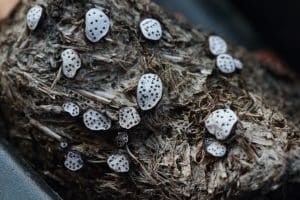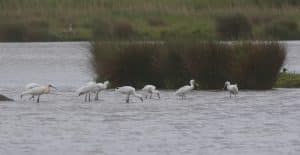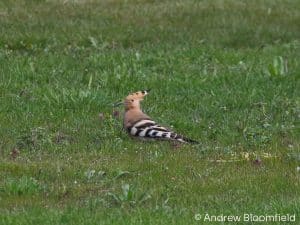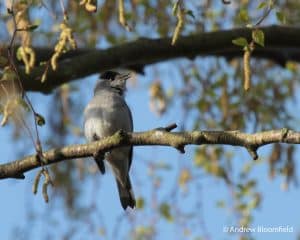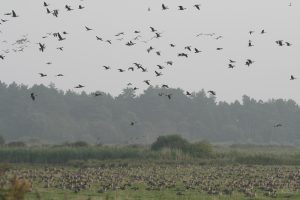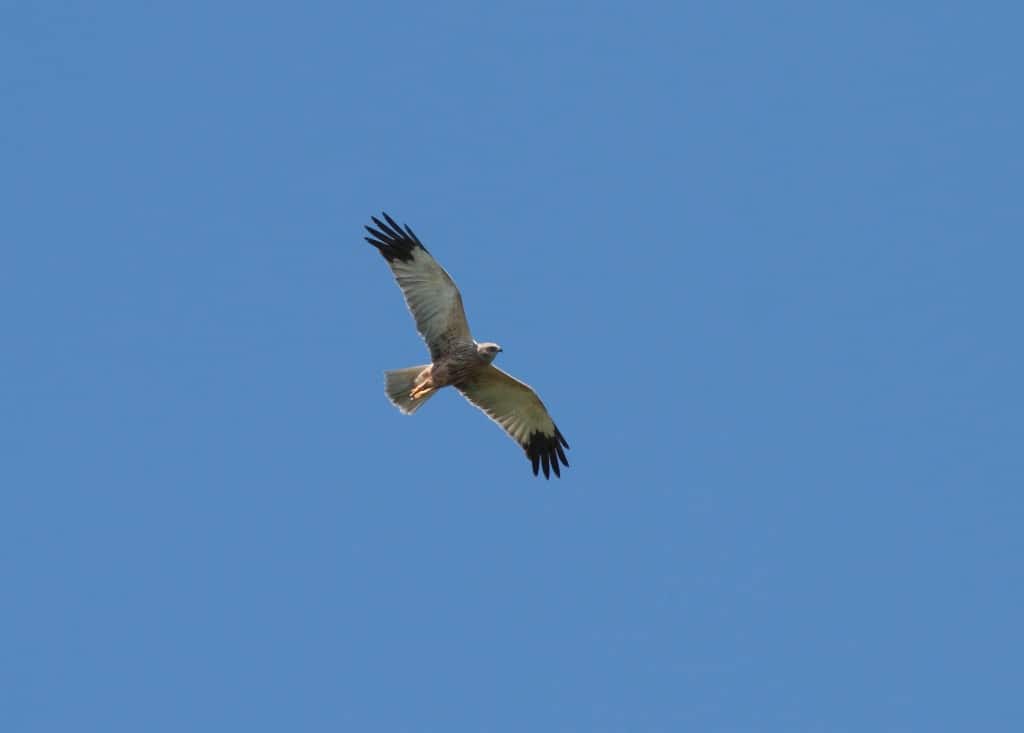
Watch out for the Birdies
August 23, 2018 | Nature news | 4 minute read
Now a regular sight in the skies over Norfolk, the Marsh Harrier was once incredibly rare bird. In 1972 only 2 pairs remained in the UK breeding on the Suffolk coast but the species has since recovered. Now there are over 400 breeding females in the UK with 100 of those in Norfolk alone. Marsh Harriers returned to breed at Holkham in 1982 with 8 nests recorded in 2017.
The male can be identified by its grey wings with black tips and brown body while the female is entirely brown apart from pale patches on her wings either side of the body and a pale crown.

Male Marsh Harrier
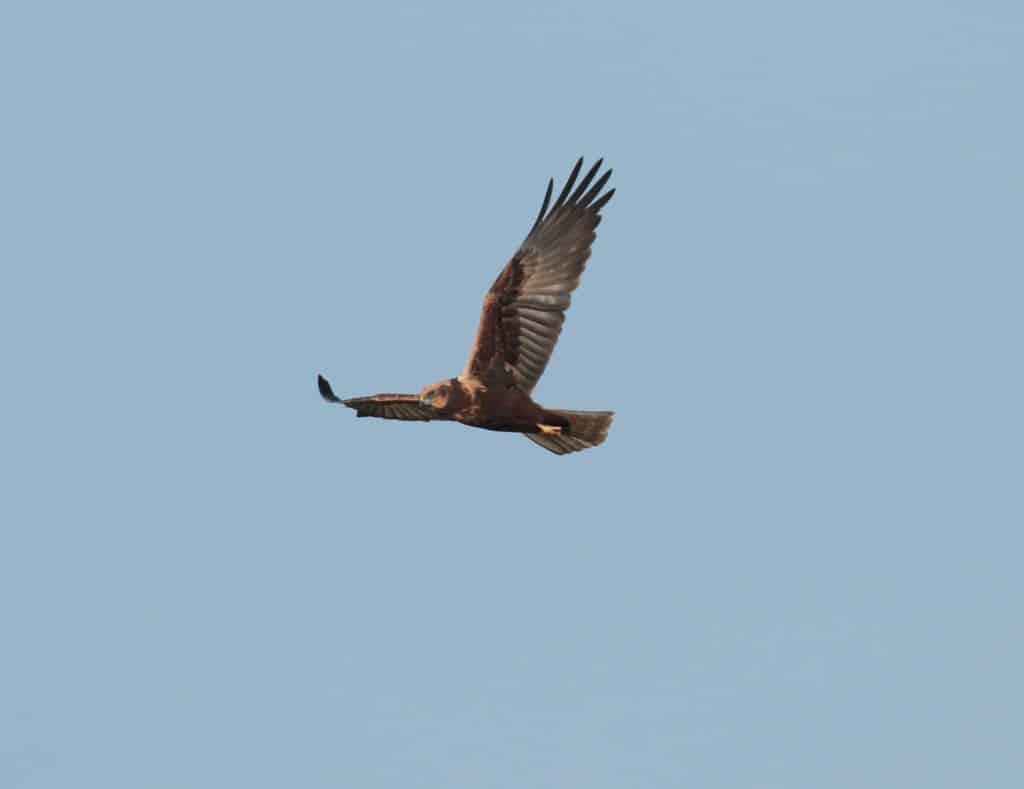
Female Marsh Harrier
The ‘skydancing’ display of the male can be seen from March as he tries to attract a female to his patch of reedbed. The display is a spectacular series of loops high in the sky before dropping into the reeds at his nest site. Marsh harriers build their nests on the ground using a platform of reeds to raise the eggs above the water level. 4-5 eggs are usually laid in April with successful young leaving the nest in mid-summer.
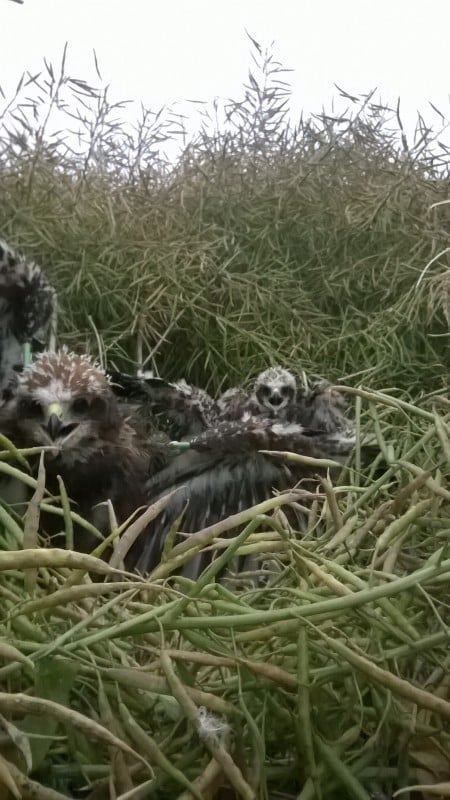
Marsh Harrier nestlings
Although most of the birds that breed in the UK head south to Africa for the winter, a number of birds now stay on their breeding grounds. At dusk they gather in a communal roost in the reedbed with up to 15 birds in the air together before dropping into the reeds.
Since 2011, a project led by the North West Norfolk Ringing Group has been studying the breeding Marsh Harriers within north and east Norfolk and north Suffolk. The objective of the project is to find out more about the dispersal of the young harriers from their breeding areas.
Each nest is monitored throughout the breeding season and once the young are old enough to ring (approximately 19 days), trained bird ringers visit the nest to carry out the ringing and tagging operation. Each of the chicks are sexed, this is important as males and females have different size legs and take different size rings, they are weighed and then have their individual wing-tags fitted. These lightweight tags (green or orange) are fitted to each wing and carry a unique letter/number combination. In the hands of experience ringers, each bird takes five minutes to process and are returned to the nest as quickly as possible. Once the birds have fledged (flown the nest), the tags can be observed in the field using telescopes or digital cameras and the information passed back to the ringing project.
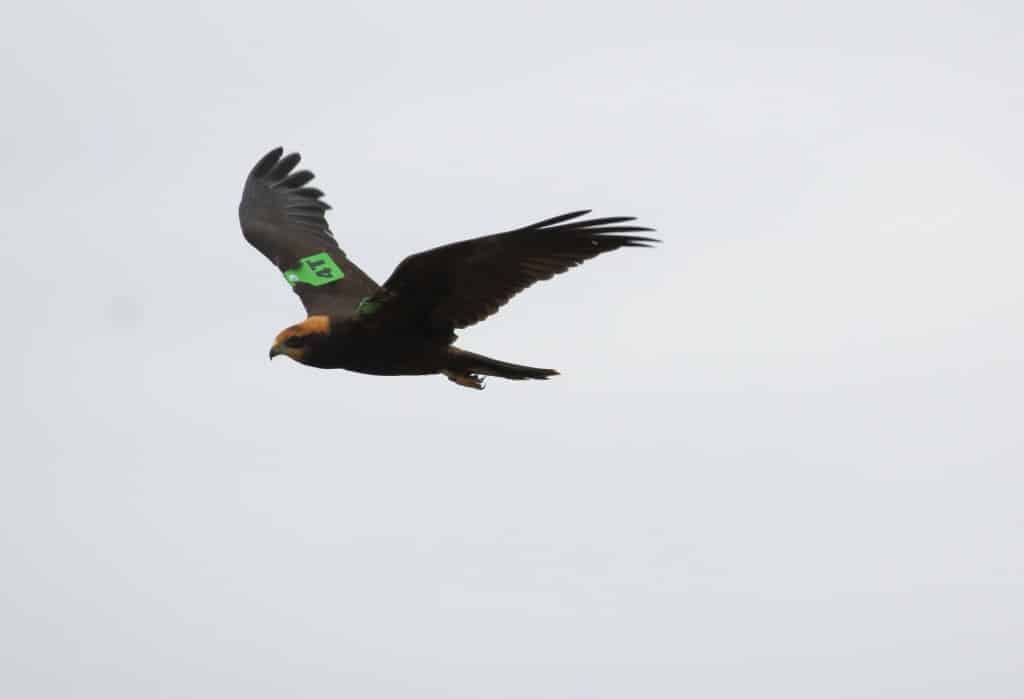
Wing tagged Marsh Harrier 4T
Wing-tagging has provided the project with vital information about the movements of the birds that never would have been possible in the past. Before wing-tags were used, only 7 of the 213 young harriers that had been ringed with just a metal ring had been recovered and sadly they were found dead. In the 7 years (2010-2017) since the project started 384 young harriers have been tagged resulting in a 32% recovery/re-sighting rate, much higher than the project had ever anticipated. To date, young harriers from Norfolk have been seen throughout the UK but also as far afield as Belgium, Portugal, Germany, Holland, Spain and Norway.
If you lucky enough to see one of the projects’ tagged birds the details can be reported to the British Trust for Ornithology (BTO) via their website or directly with the project team co-ordinator Phil Littler by email at harriermanphil@gmail.com. Please provide as much information as you can and a photograph if possible.
View all latest blog posts here.
